In the grand theater of the natural world, survival often hinges on a creature’s ability to pull off a convincing performance. Enter the art of thanatosis, or “playing dead,” a dramatic strategy that various creatures employ to outwit predators. These performances range from the Oscar-worthy to the simply bizarre, and reveal fascinating insights into the cunning tactics of the animal kingdom. Join us as we explore the animals that take method acting to a whole new level.
1. Opossum

The opossum is perhaps the most well-known practitioner of this peculiar art. When faced with a threat, it doesn’t just lie still—it goes all in, emitting a foul odor and even drooling to complete the act. This survival strategy, known as “playing possum,” can trick predators into thinking the opossum is a less-than-fresh meal. According to National Geographic, this involuntary response can last for several hours, enough time for the danger to pass.
Remarkably, this is not an act of conscious control. The opossum goes into a catatonic state, a kind of temporary paralysis that resembles a coma. Predators like foxes or coyotes often lose interest in what they believe is already a corpse. In this way, the opossum avoids becoming dinner and lives to play dead another day. It’s a compelling mix of instinct and evolutionary design.
2. Hognose Snake

The hognose snake, with its delightful flair for drama, deserves a special mention. When threatened, it doesn’t just curl up and wait—it first tries intimidation with hissing and spreading its neck like a cobra. If this fails, it escalates its performance by flipping onto its back and playing dead. Its pièce de résistance? The snake often regurgitates its last meal to add authenticity to its act.
What makes this snake particularly fascinating is its dedication to the role. Even if flipped back onto its belly, it will dramatically roll over again, committed to its narrative of deception. This display is usually enough to deter predators like birds and small mammals. It’s a masterclass in improvisation, showing that sometimes the best defense is simply pretending to be out of the game.
2. European Fire-Bellied Toad
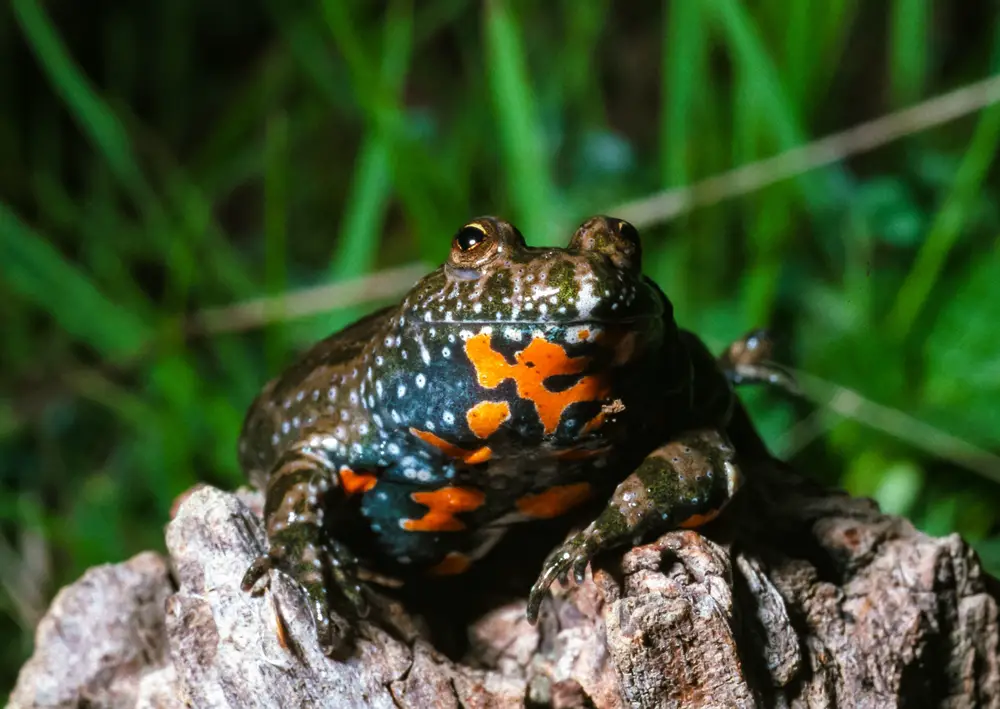
In the wetlands of Europe, the fire-bellied toad employs a vibrant and theatrical defense mechanism. When threatened, it performs the “unken reflex,” a behavior where it flips onto its back to display its bright, warning-colored belly. The visual cue is a stark warning of its toxic nature, a clever move to ward off would-be predators.
This tactic isn’t just about color; it’s a calculated risk of exposure. The toad remains motionless, playing dead, while showcasing its lethal allure. Predators recognize this as a sign of danger and often retreat, uninterested in a potentially dangerous meal. The fire-bellied toad’s audacious strategy is a testament to the effectiveness of a bold visual statement in the animal kingdom’s playbook.
4. Common Eider Ducklings
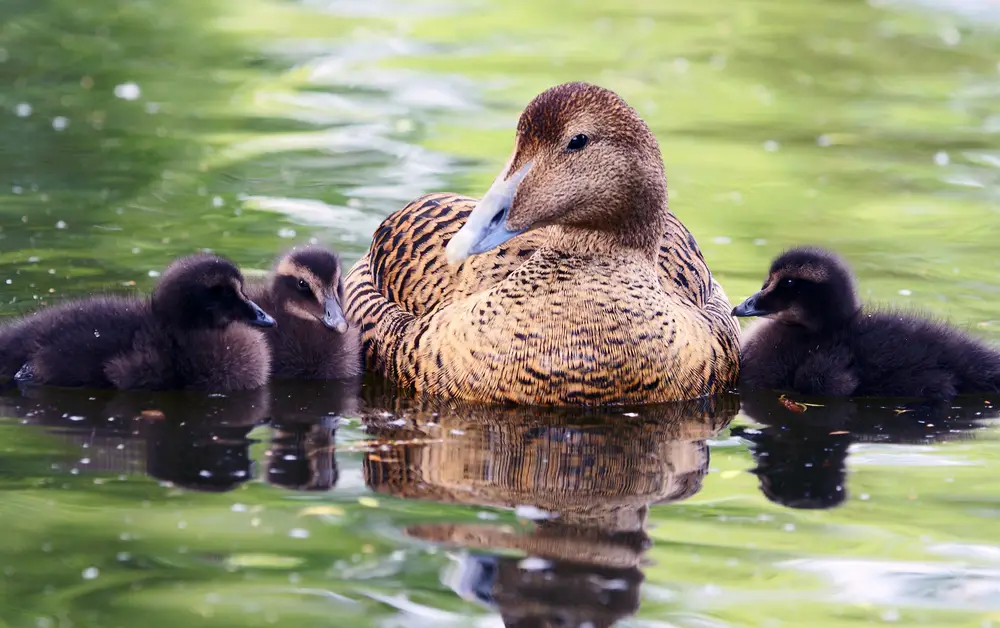
In the Arctic and sub-Arctic regions, common eider ducklings have a unique way of dealing with threats from aerial predators. When a shadow looms overhead, these ducklings instinctively freeze and fall to the ground, feigning death. This behavior is particularly effective against birds of prey that rely on movement to spot their targets.
Their small, still bodies blend seamlessly into the rocky terrain, becoming nearly invisible to predators flying above. By playing dead, they reduce their chances of being picked up by a hungry gull or skua. It’s a simple yet effective survival tactic that underscores the importance of remaining inconspicuous in a world filled with danger. In doing so, these ducklings buy precious time until they can safely continue their journey.
5. African Spiny Mouse
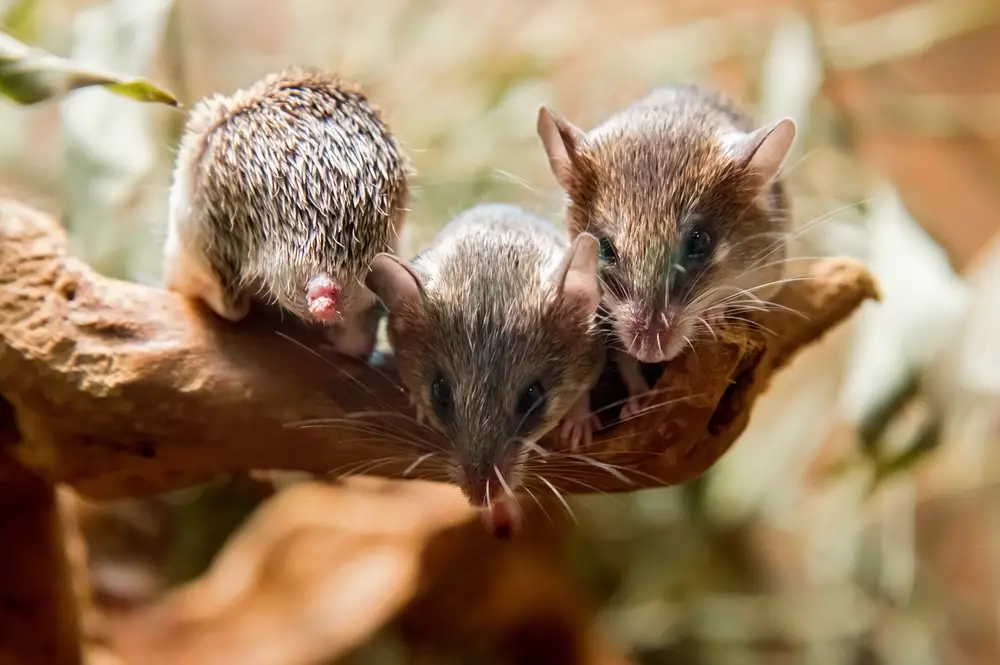
The African spiny mouse takes the art of deception to a whole new level with its ability to heal quickly and regrow skin. When threatened, it plays dead, but that’s just part of its act. If cornered, this rodent has the remarkable ability to shed patches of skin, leaving its predator with a mouthful of fur while it makes a hasty escape.
This self-preservation technique is coupled with an extraordinary ability to recover from injuries that would be fatal to other mammals. The mouse’s regenerative powers allow it to focus on survival rather than nursing wounds. This evolutionary advantage not only aids in escape but also highlights the animal’s resilience and adaptability. It’s a brilliant example of how playing dead can be just one scene in an impressive survival script.
8. Antlion Larvae
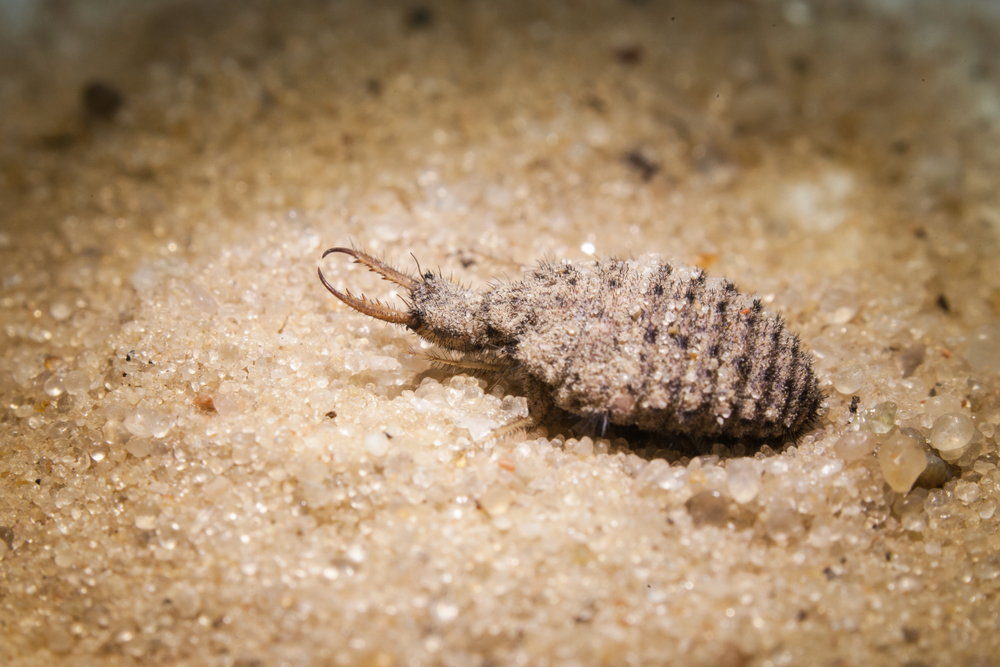
In the sandy soils where antlion larvae reside, these cunning creatures have developed a strategy to avoid becoming prey themselves. When disturbed, they freeze and play dead, allowing them to blend seamlessly with their environment. This act of stillness is crucial, as any movement could give away their position to predators such as birds or larger insects.
Their ability to lie motionless for extended periods is a testament to their patience and survival instincts. This behavior not only prevents predation but also allows them to focus on capturing their own prey, primarily ants and other small insects that fall into their sandy traps. By mastering the art of thanatosis, antlion larvae exemplify the delicate balance between predator and prey in the natural world.
7. Raccoon
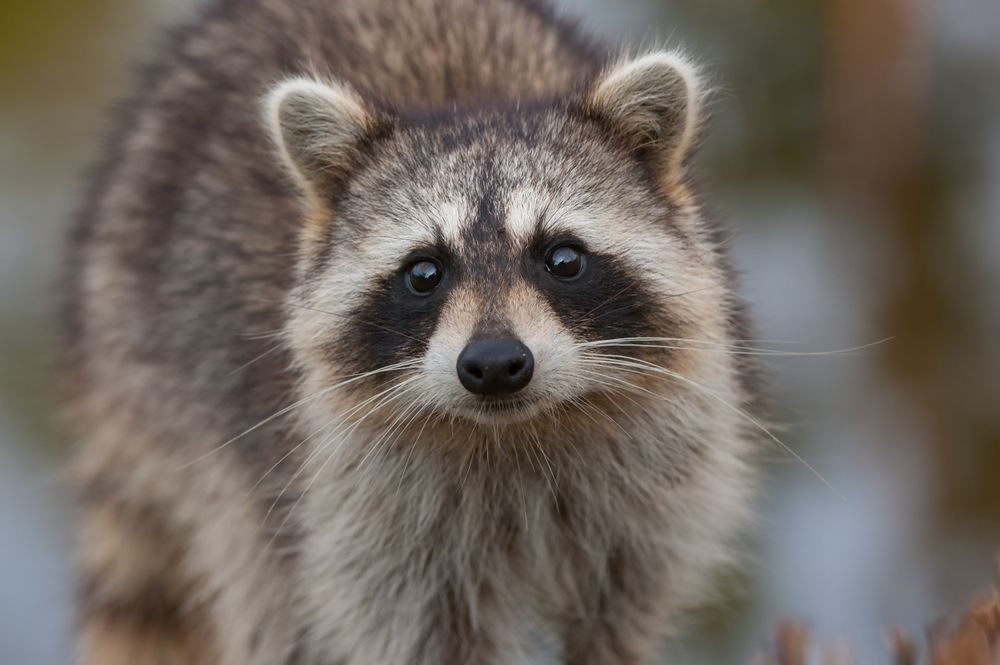
The raccoon, known for its intelligence and adaptability, also has a trick up its striped sleeve when it comes to avoiding threats. While primarily relying on its agility and craftiness, a cornered raccoon may resort to playing dead as a last-ditch effort to escape danger. This behavior is particularly useful when dealing with larger predators or humans who might mistake them for a threat.
Feigning death allows the raccoon to take advantage of an often unguarded moment. As the predator examines the seemingly lifeless body, the raccoon can seize the opportunity to make a quick getaway. This clever use of thanatosis highlights the raccoon’s resourcefulness and ability to navigate a wide range of environments and threats. It’s a survival tactic that showcases the animal’s quick thinking and adaptability.
8. Black Swallowtail Caterpillar
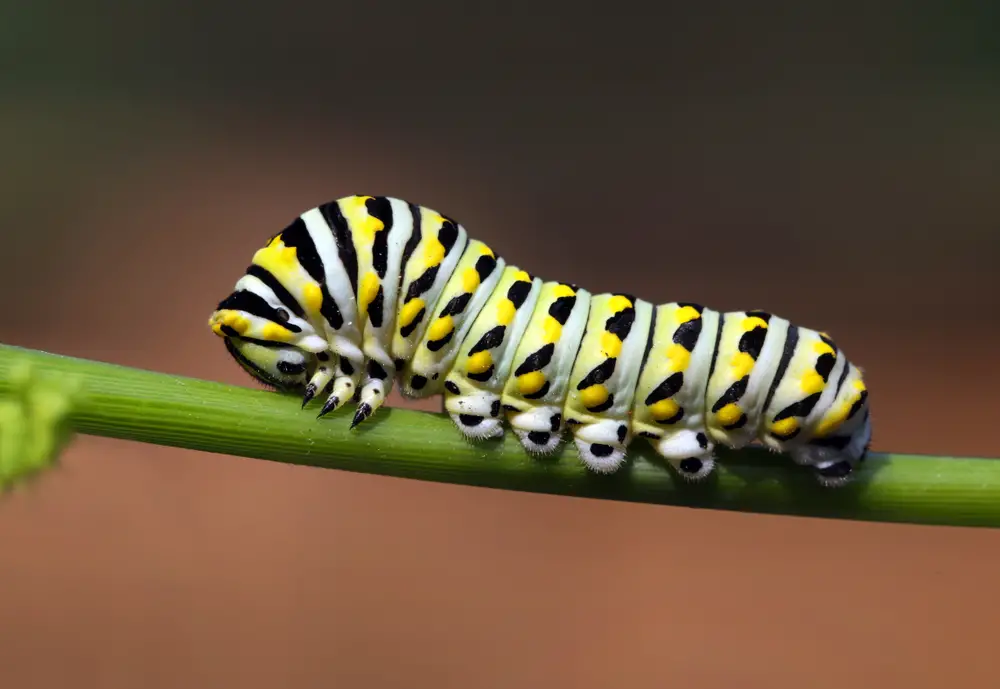
The black swallowtail caterpillar, with its striking appearance, knows that sometimes the best defense is not to attack. When disturbed, it falls from its perch and curls up, playing dead on the forest floor. This sudden drop often confuses predators, giving the caterpillar a chance to escape notice.
Moreover, its vibrant coloration acts as a warning signal, indicating potential toxicity to those who might consider it a meal. By combining these tactics, the caterpillar effectively manages to dissuade predators while minimizing confrontation. The elegance of this approach lies in its simplicity, showing that sometimes, less can indeed be more in the wild.
9. Brazilian Biome Anole
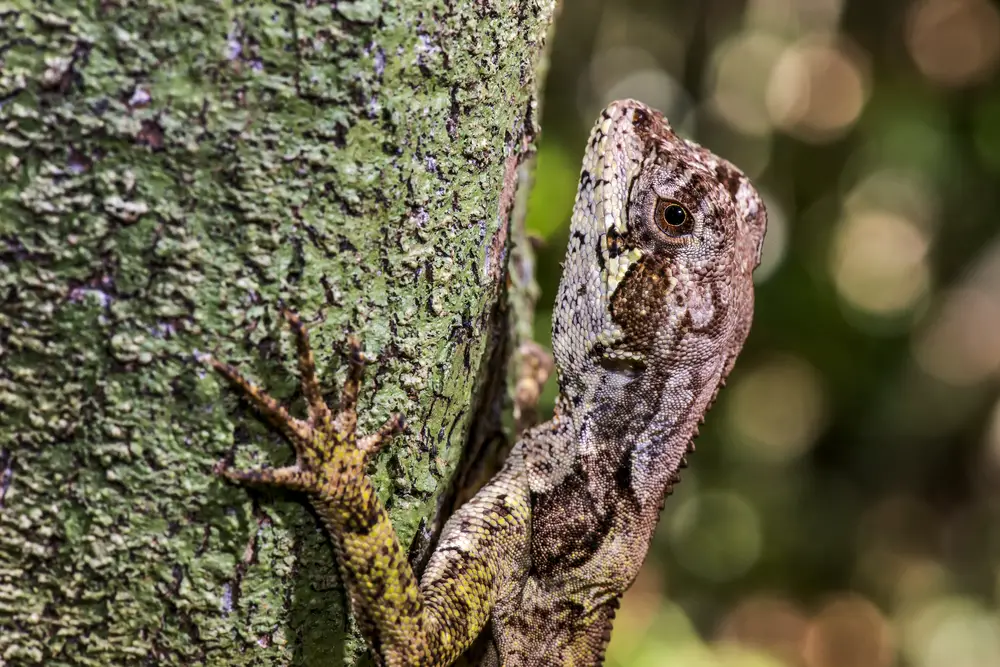
In the diverse ecosystems of Brazil, the anole lizard has mastered the art of playing dead to perfection. When faced with danger, it remains absolutely still and even allows itself to be handled without signs of life. This behavior is particularly convincing to inexperienced predators who might mistake its stillness for death.
The anole’s ability to remain motionless is a strategic move to outwit its enemies. It’s a gamble, but one that often pays off, as many predators prefer live prey and quickly lose interest in what they perceive as a lifeless body. This tactic underscores the anole’s adaptability and its keen understanding of predator psychology. In the complex dance of survival, sometimes stillness speaks volumes.
10. Japanese Grass Lizard
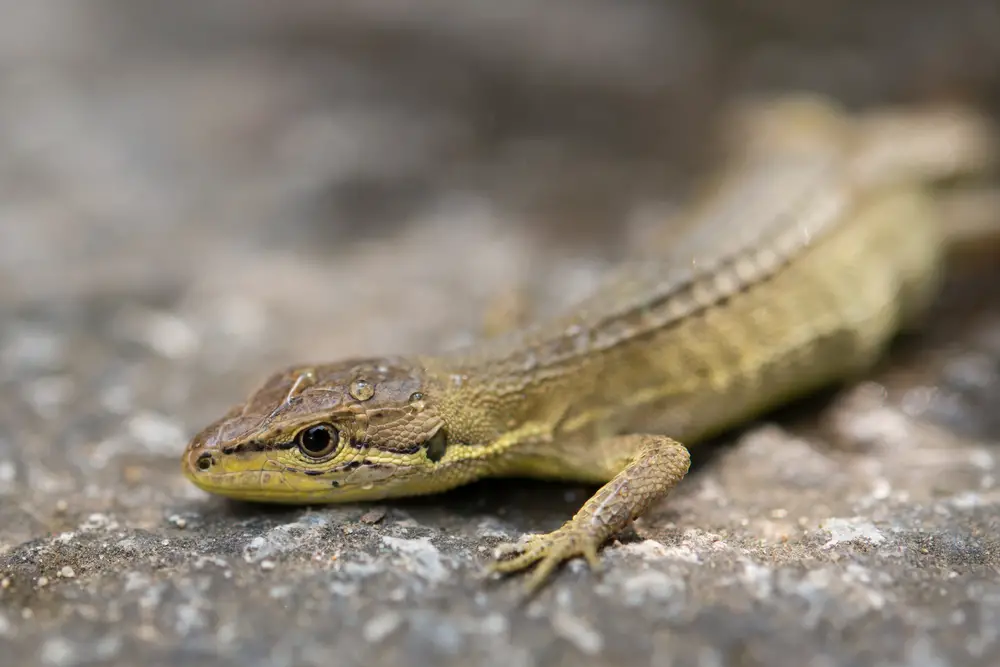
In the fields and forests of Japan, the grass lizard employs an age-old trick to evade predators. When caught or threatened, it drops to the ground and plays dead, sometimes even releasing its tail to distract the attacker. This act of self-amputation, known as autotomy, is a dramatic display of survival instinct.
While the predator is momentarily distracted by the wriggling tail, the lizard makes a stealthy escape. This dual strategy of playing dead and sacrificing a limb demonstrates the lengths to which animals will go to ensure survival. It’s a calculated risk, but one that proves highly effective in the wild. The Japanese grass lizard embodies the relentless drive to live, even if it means leaving part of itself behind.
11. Virginia Rail
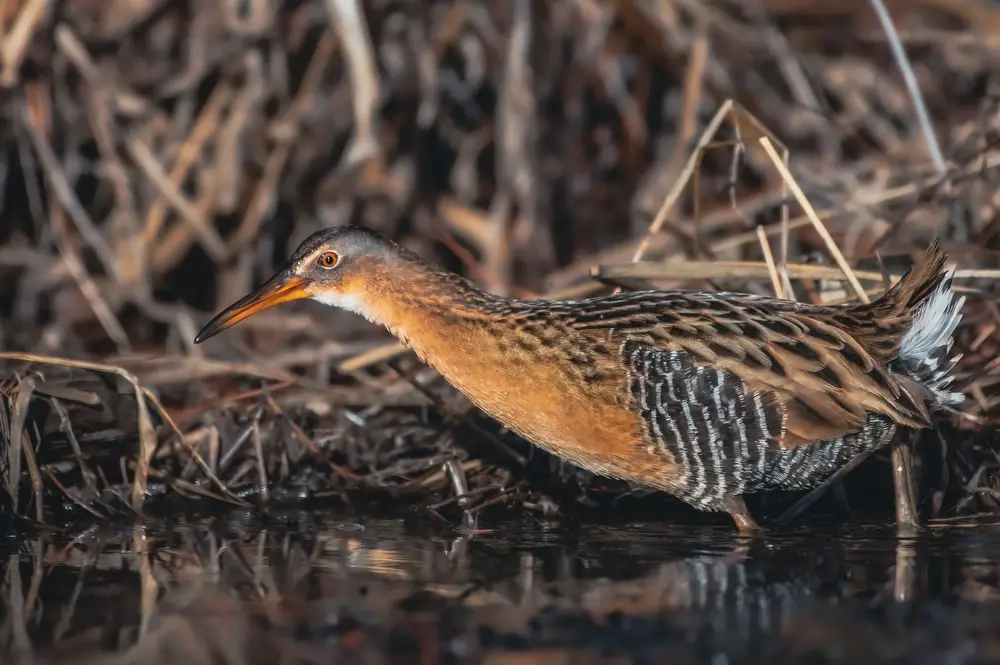
In the marshes of North America, the Virginia rail has developed an extraordinary method of evasion. When threatened, this bird remains still, often lying on its side with its legs scissored above its body, feigning death convincingly. This performance is typically enough to discourage predators relying on movement to detect prey.
The rail’s commitment to its act is remarkable, often maintaining the pose until the threat has completely passed. This behavior is an excellent example of how deception can be employed in the animal kingdom to great effect. By playing dead, the Virginia rail avoids confrontation and potential harm, showcasing a cunning strategy in its survival toolkit. It’s a fascinating glimpse into the lengths animals will go to remain undetected and unharmed.
12. Redback Spider
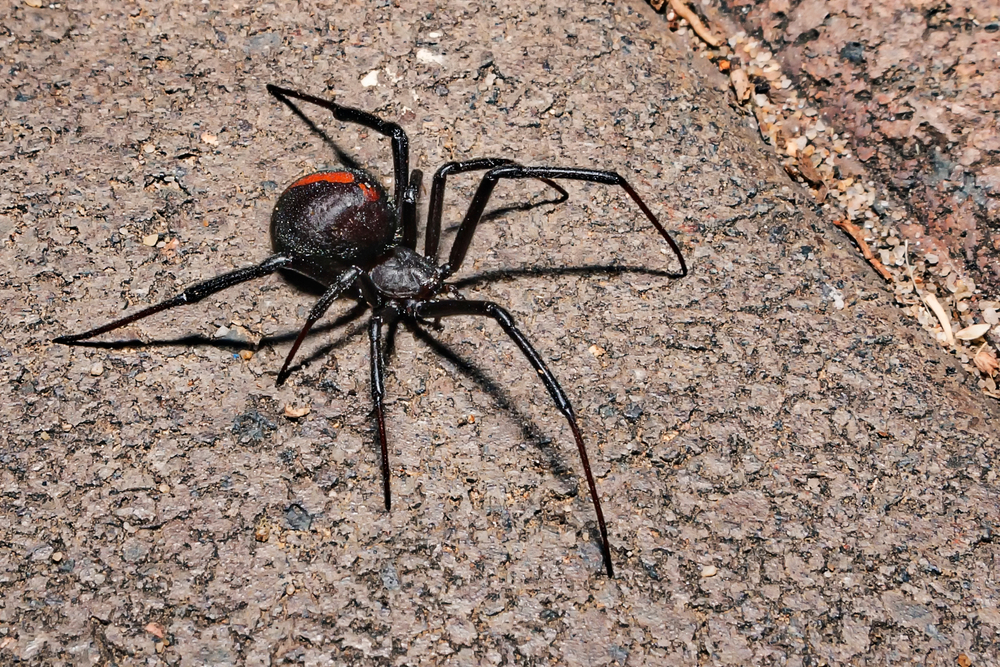
Although venomous and feared, the redback spider is not above a little theatrics when it comes to mating rituals. When a male approaches a female, he often plays dead, allowing her to carry him into her web without suspicion. This behavior is a strategic ploy to reduce the risk of being eaten during or after mating, a common fate for male spiders.
By appearing lifeless, the male gains an opportunity to mate without triggering the female’s predatory instincts. This act of deception allows the male to pass on his genes while minimizing the risk of becoming a meal. It’s a high-stakes game of love and survival, illustrating the complex interplay of risk and reward in nature. The redback spider’s unique approach to courtship is a testament to the ingenuity and adaptability found in the animal kingdom.
